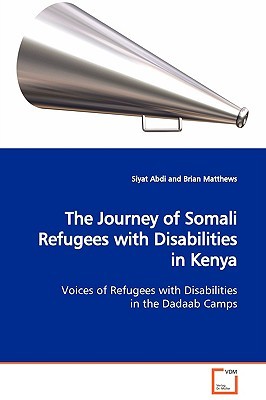
- We will send in 10–14 business days.
- Author: Siyat Abdi
- Publisher: VDM Verlag
- ISBN-10: 3639129393
- ISBN-13: 9783639129397
- Format: 15.2 x 22.9 x 1.3 cm, softcover
- Language: English
- SAVE -10% with code: EXTRA
The Journey of Somali Refugees with Disabilities in Kenya (e-book) (used book) | bookbook.eu
Reviews
Description
The conditions in which refugees live in many parts of the world is of concern to the international community. In the Dadaab Camps in Kenya live hundreds of thousands of refugees whose lives have been shattered by unrest and violence, particularly in neighbouring Somalia. Amongst these refugees are many people with disabilities, often caused and/or exacerbated by violence, malnutrition, and discrimination. Refugees with disabilities are largely invisible to the international community because this group's needs are overshadowed by the deplorable conditions which most people who live in these camps experience. This work attempts to make refugees with disability visible and give them a voice. In a series of interviews, focus group discussions, and case studies, their challenges, experiences, and aspirations are explored. The first author, himself an Ethnic Somali and vision impaired since birth, brings a unique perspective to the lived experience of those with a range of disabilities in the Dadaab Camps. This book clearly identifies many of these experiences and provides an important roadmap for change for those in the Camps and the international community.
EXTRA 10 % discount with code: EXTRA
The promotion ends in 17d.13:11:09
The discount code is valid when purchasing from 10 €. Discounts do not stack.
- Author: Siyat Abdi
- Publisher: VDM Verlag
- ISBN-10: 3639129393
- ISBN-13: 9783639129397
- Format: 15.2 x 22.9 x 1.3 cm, softcover
- Language: English English
The conditions in which refugees live in many parts of the world is of concern to the international community. In the Dadaab Camps in Kenya live hundreds of thousands of refugees whose lives have been shattered by unrest and violence, particularly in neighbouring Somalia. Amongst these refugees are many people with disabilities, often caused and/or exacerbated by violence, malnutrition, and discrimination. Refugees with disabilities are largely invisible to the international community because this group's needs are overshadowed by the deplorable conditions which most people who live in these camps experience. This work attempts to make refugees with disability visible and give them a voice. In a series of interviews, focus group discussions, and case studies, their challenges, experiences, and aspirations are explored. The first author, himself an Ethnic Somali and vision impaired since birth, brings a unique perspective to the lived experience of those with a range of disabilities in the Dadaab Camps. This book clearly identifies many of these experiences and provides an important roadmap for change for those in the Camps and the international community.


Reviews